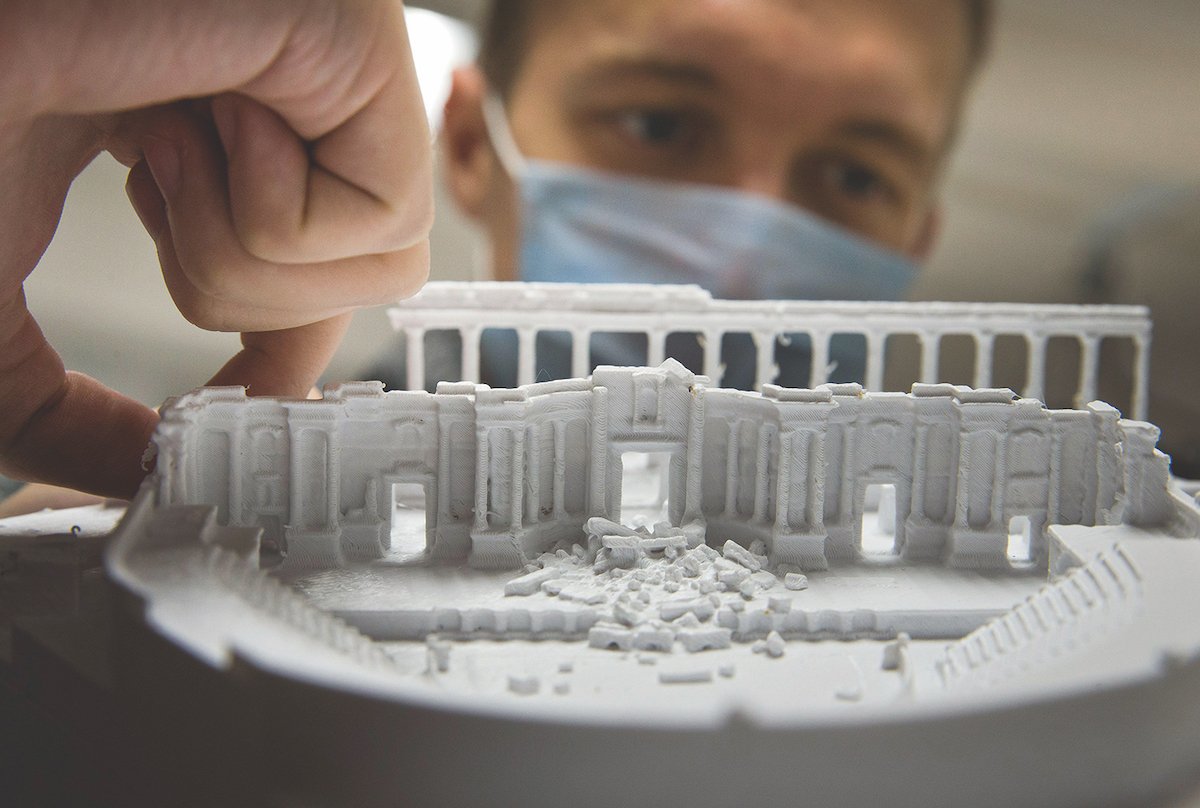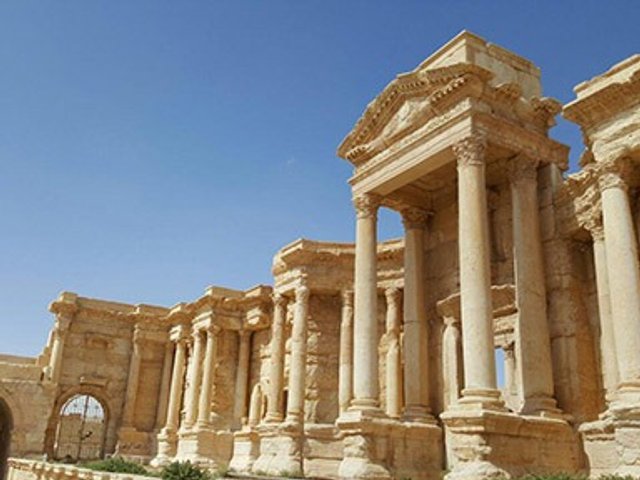The ancient city of Palmyra in Syria, which was severely damaged by Isis militants in 2015, appears to be heading toward reconstruction. In November, a memorandum of understanding on rebuilding the city’s Triumphal Arch was signed between Syria’s Directorate-General of Antiquities and Museums (DGAM) and Russia’s Stone Industry Association, which is based in Yekaterinburg.
Although the Russian government has been widely criticised for its support of Syrian leader Bashar al-Assad’s regime, the country’s researchers are one of the few sources of information about Syria’s monuments.
Natalya Solovyova, the deputy director of St Petersburg’s Institute of the History of Material Culture of the Russian Academy of Science, who was in Damascus for the signing, said in a statement that the next step would be the completion of a geo-information system called “Palmyra in Time and Space”, meshing all research and footage of the city with a 3D model created by the institute.
Drawing on 55,000 aerial photographs over 20 sq. km, the 1:300 scale 3D-printed model of Palmyra was presented to Syrian officials last August for use in future restoration, and to the international community via an English-language site.
“Using our 3D model and field research materials, we will look in detail at how many original parts of Palmyra’s monuments have survived,” Solovyova says. “All this data can be used in the future when a decision is made to restore these objects of world cultural heritage. This, in turn, will help to create new jobs and provide additional conditions for the return of forced refugees.”
The model is currently on show at the Hermitage Museum in St Petersburg in the exhibition Two Palmyras: Real and Virtual (until 24 January), one of three displays about the ancient archaeological site, a subject promoted by Mikhail Piotrovsky, the museum’s director.
The exhibition also includes digital models of the Temple of Bel, before its destruction and of its projected restoration executed by architects Maksim Atayants Workshop. The architects also created a scale model of one of the temple’s column capitals.
To coincide with the exhibition opening, the Hermitage organised a virtual conference on 2 December about approaches to saving Palmyra, with speakers including Mechtild Rössler, the director of the Unesco World Heritage Centre, Houmam Saad, who leads the archaeological digs for the DGAM, and Luis Monreal, the general manager of the Aga Khan Trust for Culture. During the conference, Piotrovsky stated that Unesco had been asked to set up a “research committee on the restoration, reconstruction and rebirth of Palmyra”.




